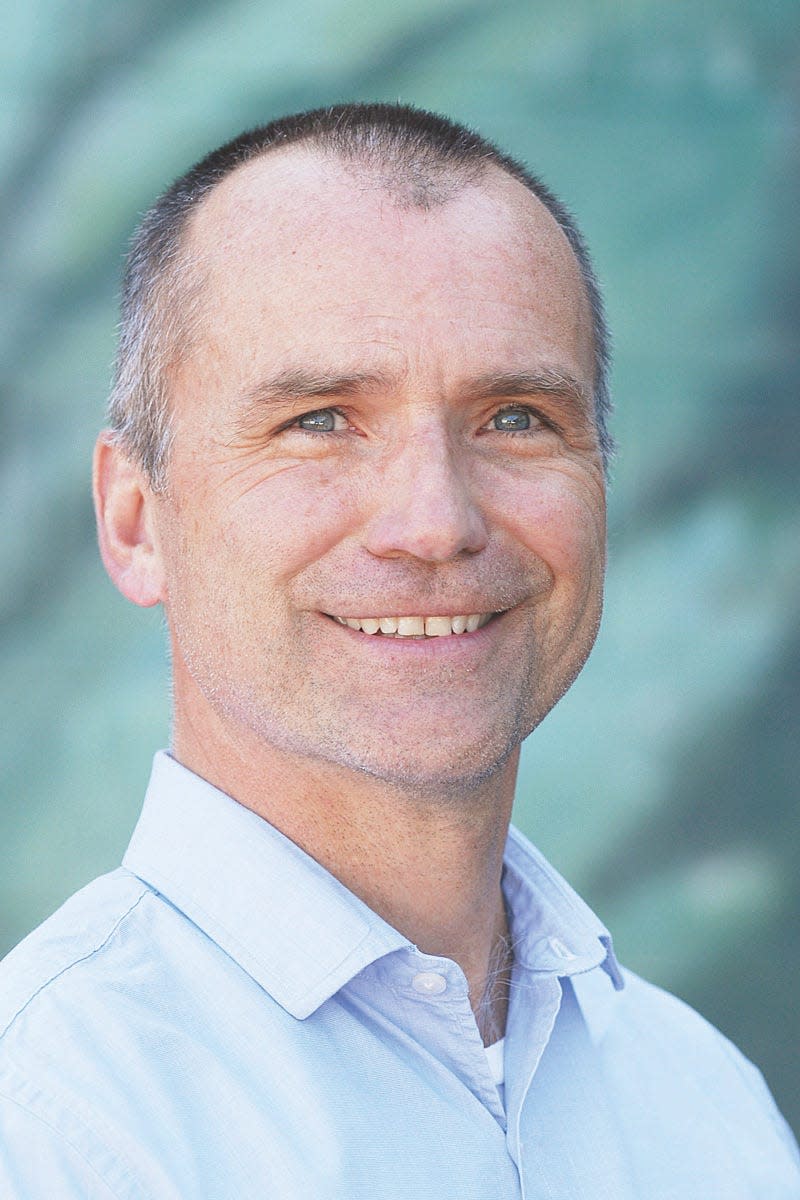Literate Matters: In a world out of whack, there are lessons in history and in nature

- Oops!Something went wrong.Please try again later.
What animal that both sometimes causes destruction but might also serve as a useful tool to combat flooding caused by climate change is traced to America’s first multimillionaire John Jacob Astor?
Why the beaver of course.
And what is at once a necessary element to sustain life on the planet, but also a scourge that causes catastrophic trouble when it’s unleashed in unmanaged ways?
Phosphorous, naturally.
These are just a couple of the revelations in two new books worth reading.

In “Beaverland: How One Weird Rodent Made America,” Leila Philip goes in pursuit of the animal she calls “a study in agitation and appetite.”
Astor of course figures in the early American fur trade, having leveraged his work in New York to the Michigan territory, and as far west as Oregon. From coast to coast, Astor once cornered the market in furs, his American Fur Company, once headquartered on Mackinac Island, “America’s first multinational corporation and a plunderer’s dream.”
But Philip is not content with history, rich though it is with both beaver myth and beaver trails. From her Connecticut home, she ventures along a trap line with Herb Sobanski, whose practical approach to beaver management is sometimes at odds with Philip’s feeling of “the mystery of raw nature.”
Sobanski traps nuisance animals, and sometimes that means beavers that have flooded a neighborhood or a commercial area with their dam building. But dam building is also an opportunity, Philip explains, if we could adjust our own blind allegiance to more, more, more because “our survival now depends on our ability to control our attempts to control nature.”
Subscribe:Check out our offers and read the local news that matters to you

“The Devil’s Element: Phosphorus And A World Out of Balance,” new from Dan Egan, paints a more precarious picture of the consequences of nature out of balance.
Egain believes, “If you haven’t heard about the emerging menace of blue-green algae that produce poisonous cyanotoxins, you will.” This algae is produced in large part due to the run-off from agricultural fields, and that run-off is heavy in phosphorus.
“Blue-green algae, known as cyanobacteria,” Egan explains, “have been around for billions of years, but climate change is boosting the environmental role they play because they thrive in our warming waters and feed on the ever-increasing levels of atmospheric carbon,” which means these bacteria are ravaging the environment like never before due to the myriad ways agriculture and industry are raising water temperatures.
Florida’s fertilizer mines, built on the remains of fossilized prehistoric creatures such as “gargantuan armadillos” and “extinct ground sloths that stood more than 12 feet tall” get a fair share of the blame, producing corn stalks of “apple tree heights” and bushel-per-acre yields that have grown “five-fold since agriculture pioneers unleashed the powers of rock fertilizer on corn and other crops.”
The run-off from field applications “tumbles into our streams, rivers, and lakes, where it then fertilizes bumper crops of blue-green algae.”
Phosphorus, a key ingredient in these fertilizers, is responsible for both amazing crop yields, but also waterways choked by algae and therefore no longer safe for human consumption or exposure.
Egan paints a grim picture, but suggests “there are steps we can take to pull some of that nuisance phosphorus back into the agricultural cycle,” which might include abandoning programs to promote ethanol as an alternative fuel and reconsidering how we manage simple human waste or “night soil.”
There are lessons aplenty in the natural world if we would only take heed, and in “Beaverland” and “The Devil’s Element” Leila Philip and Dan Egan provide useful direction to these lessons.
Good reading.
This article originally appeared on The Petoskey News-Review: Literate Matters: In a world out of whack, there are lessons in history and in nature
